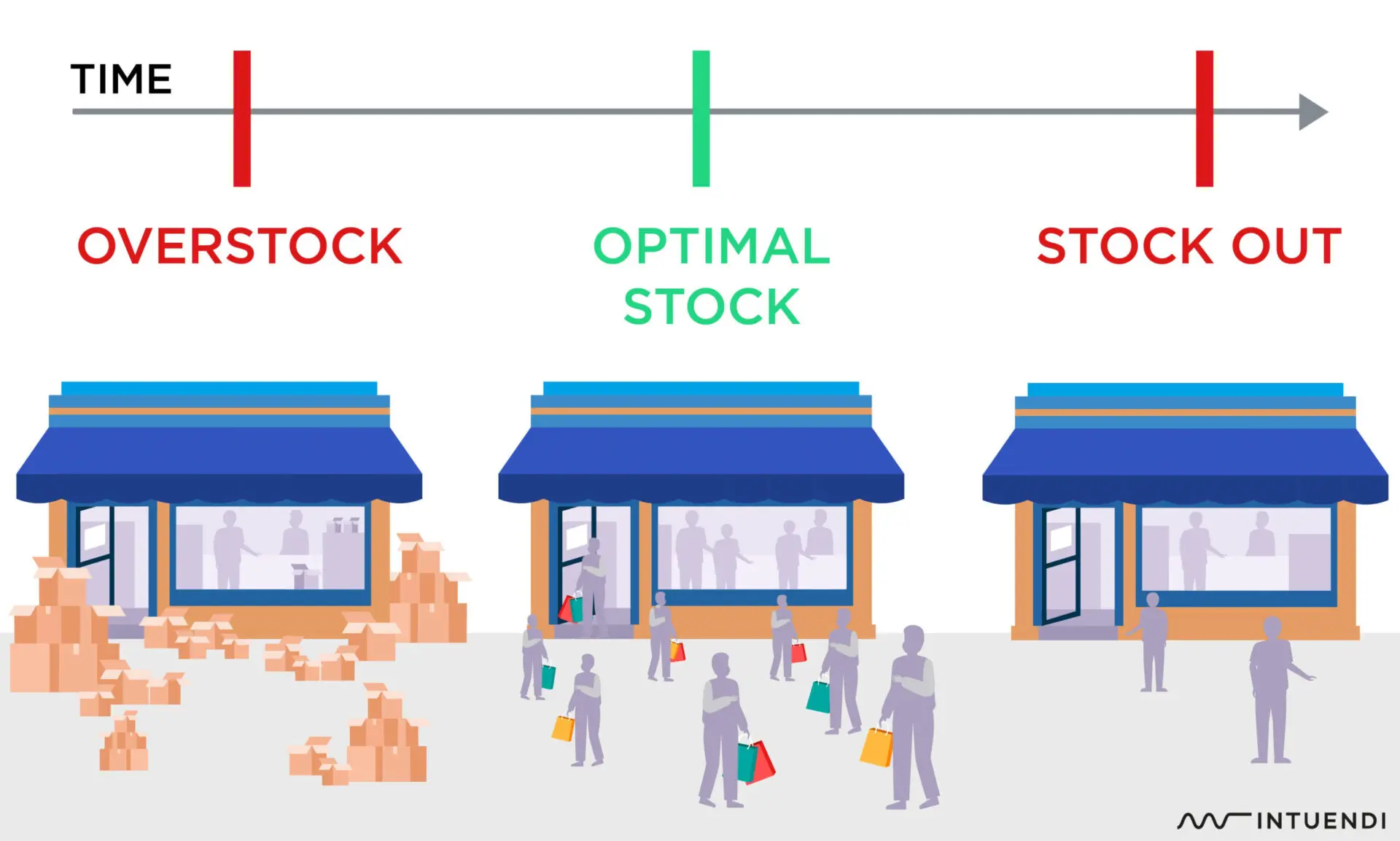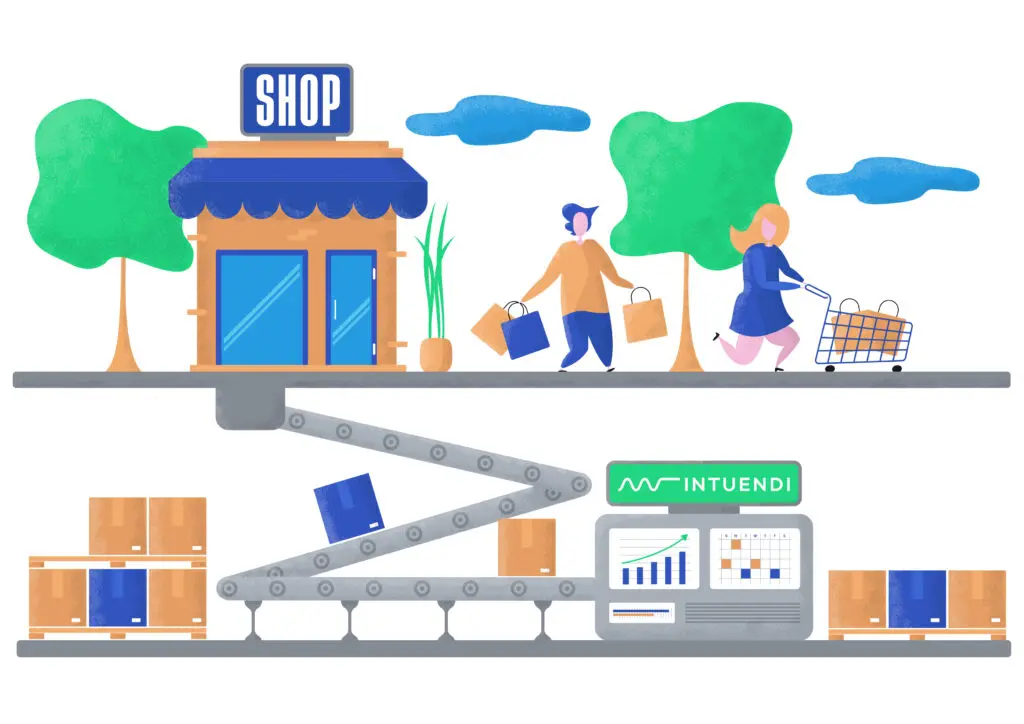Growing eCommerce businesses must establish a demand plan to maintain customer satisfaction while simultaneously minimizing excess inventory and reducing stockouts for popular products. The main objective for companies of all sizes is to increase profitability and meet their customers’ demands. But how can businesses choose effective demand and inventory planning methods that will increase sales and reduce overstock?
Traditional Methods and Why They’re Ineffective
Using the proper tools in the demand planning process improves warehouse management and operations through a faster and innovative approach. Traditional, manually created demand plans that use excel sheets just don’t cut it anymore. They are time-consuming and contain miscalculations, so businesses are open to errors in their planning, restricting their growth and potential sales. According to Apruve, “Manual forecasting is quite a long process. The longer the time you spend working on sales forecasting, the higher the possibility of losing actual sales opportunities.” Additionally, “the human mind can be erroneous and say, a single mistake in counting certain numbers will double your work.”
However, using proper tools like demand planning cloud-based software that implements AI and Machine Learning technology can produce faster and sustainable results that reduce those errors and effectively manage unexpected anomalies. Additionally, these tools aid in handling the common issues that companies face regularly.
The Impact of Long Lead Times
Customer satisfaction depends on your product, but it’s also influenced by availability and delivery time. E-commerce companies must keep up with the increased demand, shipping products when and where their customers request them. Lead time forecasting is critical and often overlooked in the demand planning and replenishment process. The delivery times generally possess a high level of uncertainty and are delay-sensitive, especially for suppliers located overseas.
Over this past year, businesses have witnessed the accelerated shift from traditional shopping to online shopping due to the pandemic, which has increased lead times. Bridget McCrea presents trends surveyed by ISM, claiming, “57% of firms noted longer lead times for Tier 1, China-sourced components, with average lead times more than doubling compared to the end of 2019.” Long lead times significantly impact the delivery time for customers and, as a result, negatively influences customer relations and loyalty.
Companies within the home decor industry, for example, experience delays from their distributors or on the container, which affects the availability of products like furniture and the reputation of the company’s brand name. According to MHL News, a study performed by Dotcom reported the customer-winning characteristics for retailers: “Quick shipping builds trust. Forty-four percent of online shoppers say faster delivery would increase their trust with a brand.” Long delivery times give customers a reason to reconsider their purchase with you, and they begin searching for the products they want through your competitors. You need to be able to deliver products when your customers want them.
Increased Risks for Stockout
Additionally, stockout risks are another reoccurring problem, especially for trending health and beauty products and eCommerce businesses maintaining an extensive catalog. As stated in an article published by IBF, “As a result of stockouts, consumers were forced to buy branded and non-branded items that they wouldn’t have bought under normal circumstances. A portion of these consumers will not return to their pre-crisis brand preferences.” Stockouts have led to losing returning customers, so loyalty is mainly created based on product availability.
Inaccurate forecasting during unprecedented times prevents companies from investing money where it’s worth it because it’s hard to tell if it’ll be worth it. Businesses should meet their goals by properly stocking their popular products without the fear of losing return on investments. As a consequence of stockouts and losing customer loyalty, businesses lost an enormous opportunity in sales. According to Daphne Howland’s article, “Retailers are missing out on nearly $1 trillion in sales because they don’t have on hand what customers want to buy in their stores.” Stockouts are opportunities missed, and it deprives businesses of their potential sales goals and growth. Without the necessary management solution, companies cannot take the next step towards success and expansion. It is crucial to implement the proper tools to consider the elements that will benefit your sales and deliver fast and more accurate results that simply can’t be done through manual calculation.
The Science Behind Innovative Demand Planning Tools
Demand planning solutions powered by AI, Machine Learning, and the cloud bring an advanced approach that delivers maximum forecasting and replenishment for each SKU. These solutions combine Demand and Supply Planning and Inventory Optimization for the most successful outcome. It identifies and considers the demand for complex seasonal patterns, calendar events, and unexpected anomalies.
In this article, Bridget McCrea claims, “With AI and machine learning, that multifaceted and time-consuming process is removed because they provide algorithms that work in real-time to handle the disruption.” With predictions that provide transparency on how much to replenish stock-keeping units and the right time to do so, businesses can avoid excess inventory and stockouts. These platforms guide enterprises in preparing for what customers will actually buy, leading to an increase in sales and eliminating unused stock. With a better understanding of your catalog’s strengths and weaknesses, businesses can address their best sellers and slow-moving products so they can take action where it’s necessary.

How the Right Tool Can Make a Difference
In order to keep up with competitors and tackle setbacks such as stockouts and long lead times, it’s vital to reduce implementation costs and the time it takes to create and analyze a plan. This includes managing your company’s most unique or common challenges like lead times, delivery times, and product availability for best sellers. Cloud-based demand planning software identifies areas that need support by analyzing your data, so you are always prepared. When it comes to handling long lead times, the software allows you to work with your suppliers in real-time to generate more accurate forecasts. Even with an extensive catalog, forecasting item lead times considers multiple forecasting calculations because each item has a unique history.
With data science expertise at your fingertips, you can minimize costs, fulfill all customer demands, and overall manage each SKU’s portfolio from a greater perspective. These tools make it possible to avoid delays, so you can establish a more productive delivery timeline and gain favorability with customers. By maintaining greater product availability and customer satisfaction, sales and margin will only have room to accelerate.
The Importance of Demand Planning Tools in Today’s climate
In 2019, an increase in product availability and an advanced demand planning tool was beneficial, however, in 2021, it’s an absolute must-have. Companies need to adapt to the shifting market if they want to stay ahead of their competition, and they can do so by implementing the right tools to operate effectively and sustainably. IHL researchers suggest, “Having a single enterprise order management system that supports inventory regardless of its location and channel for delivery is crucial in today’s retail environment.”
Cloud platforms create effective plans that consider calendar events as well as unexpected anomalies. As mentioned in our previous article, “What To Expect in eCommerce After COVID”, “By introducing anomalies into your demand planning calculus, you can simulate multiple business scenarios during and post Covid-19 and face unexpected and extreme situations both today and in the future with greater demand planning accuracy.” Traditional and manual methods don’t stand a chance. Through experience, a plug-and-play process doesn’t work, nor does it consider market-changing events.
The key is utilizing a cloud-based demand planning platform that applies AI and machine learning technology. It’s also essential to choose a cloud-based demand planning software that’s easy to use, promotes transparency, and provides valuable insights. It allows you to stay informed on the details of your business plan without having to be well-versed in demand forecasting.
Who Monitors the Results?
Of course, it’s necessary to consider who supervises the process. High-tech platforms can’t just perform on their own. That’s why companies need a combination of AI technology and demand planning experts to monitor and generate methods and execution tasks. Companies benefit from partnering with data scientists and researchers who take the time to study the data and possess the skills to understand a business’s unique characteristics and complexities to develop a proactive approach. These experts work for you behind the scenes to address your issues before they arise. The combination of tools and experts is what makes the process of demand planning and inventory optimization so effective and keeps everything running smoothly.
How to Choose the “Right One”
While choosing a demand planning tool is vital for your business’s growth, selecting the right demand planning partners who use innovative cloud platforms makes all the difference. The right partners help you achieve the goals you are working towards and eliminate the errors where they arise. Choose the experts passionate about what they do and put their energy into really understanding a company’s unique qualities.
E-commerce businesses that choose to implement a well-managed plan using a cloud-based platform partnered with experts experience increased sales volume and margin. They are pleased with the visibility and results that come with the customized plan. The ROI on purchase orders is predictable, so companies make decisions confidently because they know what to expect from their planned investments. Even with a limited budget, investments are placed where they will be most profitable.
Make sure to take the time to explore how the proper demand planning tools can benefit your company. At Intuendi, we are group of experts you can partner with to reach your goals and who possess the demand planning tools to give you confidence in making your decisions and guide you in your business’s growth.
Contact us for a demo to see how your business can excel with us.






